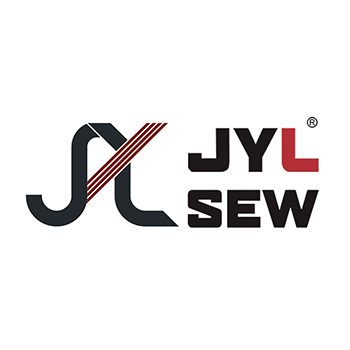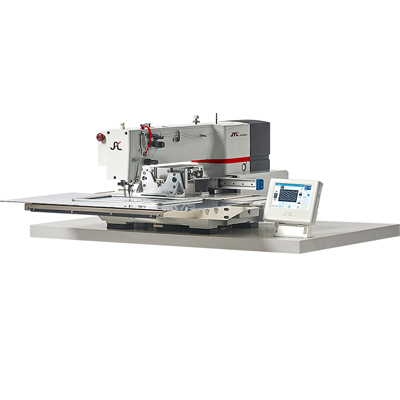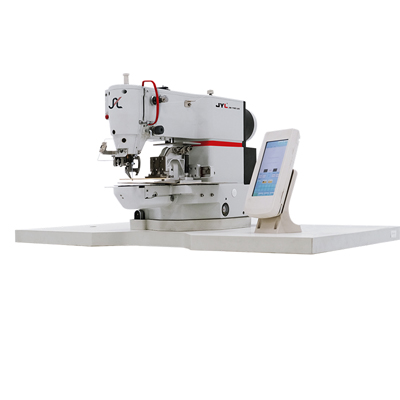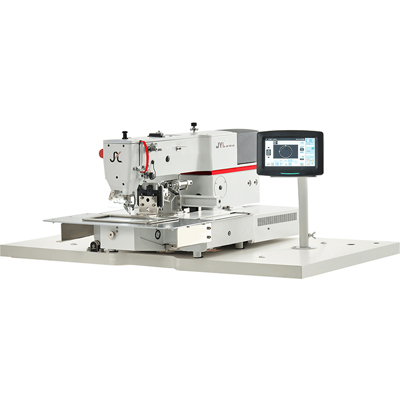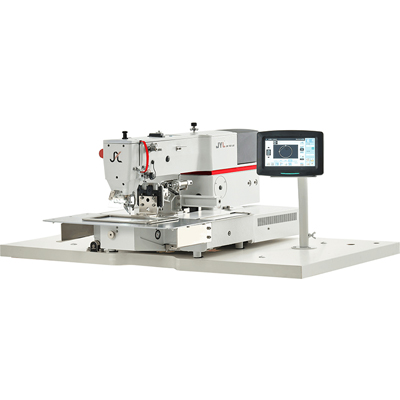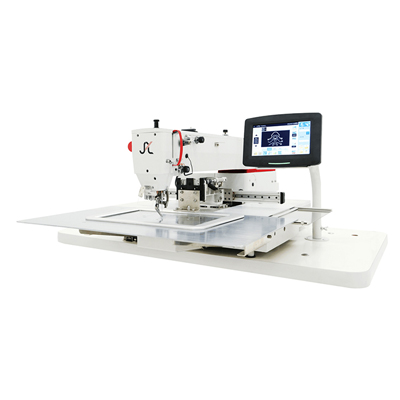Product Description
The Sewing Machine can be used to bind the materials that make up a wide variety of things, including shoe uppers, shoes, insole, handbag, luggage, suitcase, computer bag for golf bags. It also includes safety belt for articles for pets. This Sewing Machine is used for more than just natural fabrics: it binds leather and synthetic materials as well. Leather gloves are made with this Sewing Machine which also binds other material such as toys or fitness protection articles including bandages and cars. The Sewing Machine is also used for sewing jeans and cell phone covers too with the magic tape function.
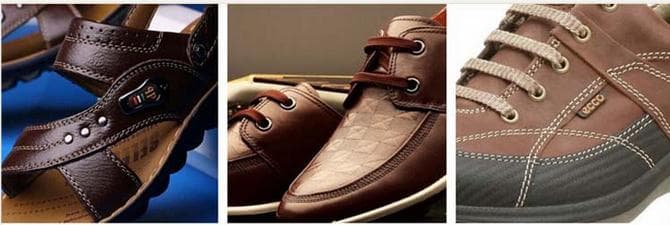
Product Specification
| Item No. | JYL-M3525G/JYL-M3020G |
| Sewing Area | 350x250mm |
| Maximum Sewing Speed | 2800r.p.m |
| Stitch | 0.05mm-12.7mm |
| Maximum No. of Stitches | 20000stitches per pattern |
| Hook | Duble rotaryhook |
| Work Holder Method | Pneumatic |
| Medium Presser Height | 30mm |
| Motor | 750W Direct -drive Servo Motor |
| Applicable Needle | DP×17 |
| Air pressure | 0.5MPa 1.8L/mim |
| Stored programs | 1-999patterns |
| Operation Type | 7.5'' Lcd Touch Panel |
| Supply voltage | AC 220V Single- pahse |
| Machine Size | 1200×1170×1230mm |
| Weight | 175KG/ 240KG |

Main Features of industrial pattern sewing machine
We're proud to introduce our Computerized Pattern Sewing Machine. This machine is widely used in the production of shoes, handbags and other sewing processes. It features strong compatibility with data input patterns and has the ability to drastically reduce your pattern work while increasing efficiency. Plus, it boasts a fast clamping mechanism that was invented specifically for sewing machines.
Comparing computerized sewing machines to Traditional Mechanical Sewing Machines
Sewing machines have come a long way since their invention in the early 19th century. Today, two main types dominate the market: Computerized Sewing Machines and traditional mechanical sewing machines. Each type offers its own set of advantages and disadvantages, catering to different needs and preferences. In this article, we will delve into a comprehensive comparison of the two to help you make an informed decision.
Advantages of Computerized Sewing Machines:
1.Precision Stitching: Computerized sewing machines offer unparalleled precision in stitching. They can create intricate designs and patterns with ease, ensuring high-quality finished products.
2.Automation: One of the most significant advantages of computerized sewing machines is their automation capabilities. They can automatically adjust stitch length, tension, and speed, reducing the need for manual intervention.
3.Versatility: Computerized sewing machines come with a wide range of built-in stitches and embroidery patterns. This versatility allows users to explore various creative possibilities and experiment with different designs.
4.Ease of Use: With user-friendly interfaces and intuitive controls, computerized sewing machines are easy to operate, even for beginners. Many models also offer on-screen tutorials and guides to assist users in mastering different techniques.
5.Memory Function: Some computerized sewing machines have built-in memory functions that allow users to save custom stitch settings and patterns for future use. This feature is particularly useful for repetitive tasks or complex designs.
Disadvantages of Computerized Sewing Machines:
1.Cost: Computerized sewing machines are typically more expensive than traditional mechanical sewing machines. The advanced technology and features come at a higher price point, making them less accessible to budget-conscious consumers.
2.Dependence on Electricity: Unlike mechanical sewing machines, which can operate manually, computerized sewing machines rely on electricity to function. This dependence can be a disadvantage in areas with unreliable power supply or during power outages.
3.Complexity: While the automation and advanced features of computerized sewing machines offer many benefits, they can also be overwhelming for some users. Beginners may find the multitude of options and settings confusing and may require time to familiarize themselves with the machine.
4.Maintenance: Computerized sewing machines require regular maintenance to keep them running smoothly. The electronic components and intricate mechanisms may be more prone to malfunction or damage, necessitating professional repairs or servicing.
5.Limited Durability: Some users argue that computerized sewing machines have a shorter lifespan compared to traditional mechanical models. The electronic components may wear out over time, leading to the need for replacement or upgrades.
Advantages of Traditional Mechanical Sewing Machines:
1.Affordability: Traditional mechanical sewing machines are generally more affordable than their computerized counterparts. They offer basic functionality at a lower price point, making them accessible to a wide range of users.
2.Reliability: Mechanical sewing machines are known for their durability and reliability. With fewer electronic components, they are less prone to malfunction or technical issues, making them a popular choice for heavy-duty sewing tasks.
3.Portability: Mechanical sewing machines are often lighter and more portable than computerized models. They do not require electricity to operate, making them ideal for sewing on the go or in remote locations.
4.Simplicity: The straightforward design and operation of mechanical sewing machines make them suitable for beginners and those who prefer a no-frills approach to sewing. They offer essential stitching functions without the complexity of electronic controls.
5.Low Maintenance: Mechanical sewing machines require minimal maintenance compared to computerized models. They are less susceptible to electronic failures and can often be repaired or serviced with basic tools and knowledge.
Disadvantages of Traditional Mechanical Sewing Machines:
1.Limited Stitch Options: Mechanical sewing machines typically offer a limited number of built-in stitches and embroidery patterns compared to computerized models. This limitation may restrict creativity and design possibilities for some users.
2.Manual Adjustment: Unlike computerized sewing machines, which can automatically adjust stitch settings, tension, and speed, mechanical models require manual adjustment for each task. This can be time-consuming and less precise, especially for intricate designs.
3.Learning Curve: While mechanical sewing machines are generally simpler to operate, they still require some degree of skill and practice to use effectively. Beginners may find it challenging to master the various controls and techniques involved in manual sewing.
4.Lack of Advanced Features: Mechanical sewing machines lack the advanced features and customization options found in computerized models. Users looking for automation, programmability, or intricate stitching capabilities may find traditional machines lacking.
5.Limited Memory: Unlike computerized sewing machines, which can store custom stitch settings and patterns in memory, mechanical models do not have built-in memory functions. Users must manually adjust settings for each sewing session, which can be inconvenient for repetitive tasks.
In conclusion, both computerized and traditional mechanical sewing machines offer unique advantages and disadvantages. The choice between the two ultimately depends on individual preferences, budget constraints, and sewing requirements. Computerized sewing machines excel in precision, automation, and versatility but come with a higher price tag and complexity. On the other hand, traditional mechanical sewing machines are affordable, reliable, and easy to maintain but may lack the advanced features and customization options of their computerized counterparts. By carefully considering the pros and cons of each type, users can select the sewing machine that best suits their needs and skill level.
